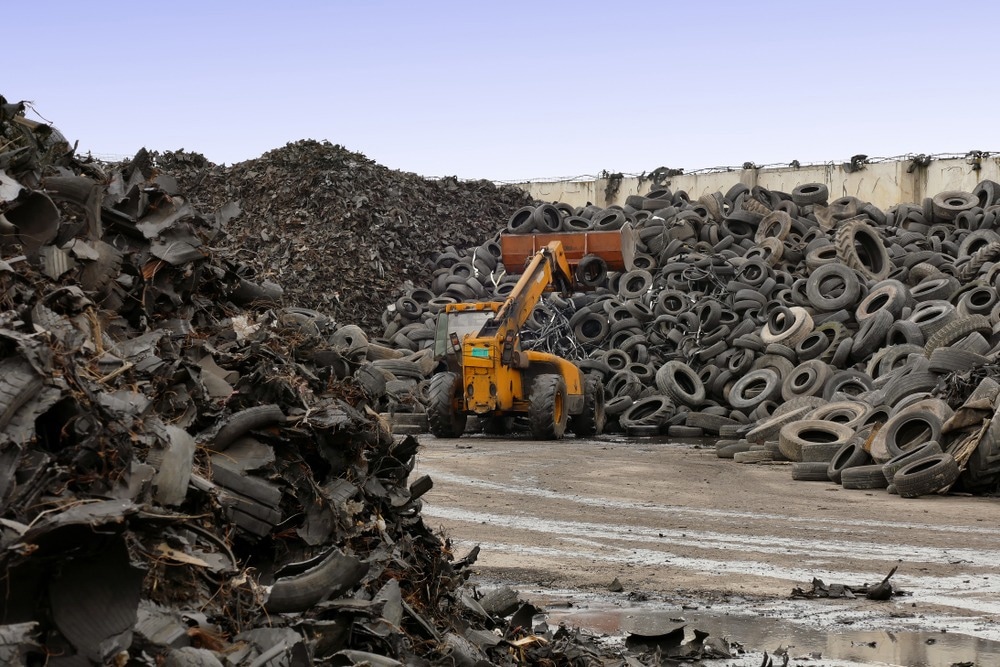In a recent article published in Environmental Science & Technology Letters, researchers addressed a pressing environmental challenge posed by tire wear particles and their associated chemical additives. The overarching goal is to develop a proactive, data-driven, and collaborative strategy that facilitates the transition toward safer tire formulations and responsible chemical management—cornerstones for advancing clean and sustainable transportation technologies.

Image Credit: overcrew/Shutterstock.com
Background
Tires are complex chemical products engineered with multiple additives that enhance performance properties such as durability, elasticity, and resistance to aging. These include antioxidants, antiozonants, vulcanizing agents, fillers, and various proprietary chemicals. However, these chemicals often have hazardous attributes, such as toxicity, persistence, and bioaccumulation potential.
As tires age and are subjected to mechanical wear, they shed tiny tire wear particles that contain a mixture of these additives and their transformation products. Recent research uncovered 6PPD-quinone, an oxidation product formed during tire weathering, which has been linked to acute toxicity in aquatic species, including fish mortality events.
This discovery underscores the unforeseen environmental risks posed by chemical transformations that occur in the environment, complicating hazard assessments based solely on initial chemical formulations. The challenge lies in the proprietary nature of tire formulations, often limiting transparency and hindering comprehensive hazard evaluation.
Existing regulatory frameworks, such as the Montreal Protocol and Basel Convention, provide valuable models for managing hazardous chemicals on a global scale, emphasizing the importance of phased bans, hazard assessments, and international cooperation. Yet, applying these models directly to tire chemicals remains challenging due to analytical complexities and the ubiquitous use of proprietary formulations.
The Current Study
The authors advocate an interdisciplinary approach rooted in advanced chemical analysis, hazard assessment, and policy development to manage tire additive pollution effectively. They recommend employing high-resolution analytical techniques such as mass spectrometry, chromatography, and environmental fate modeling to identify and quantify tire chemicals and their transformation products.
These detailed chemical profiles enable the construction of comprehensive databases that include chemical identities, concentration levels, environmental persistence, and transformation pathways.
Anonymized and publicly accessible data would facilitate transparency and support regulatory decision-making. Alongside chemical analysis, hazard characterization involves integrating toxicity data, physicochemical properties, and environmental fate parameters to assess risks at the individual chemical level and their combined effects in environmental contexts.
A collaborative framework involving independent scientists, industry stakeholders, and policymakers is crucial to interpret this information and develop science-based regulations. Life cycle assessments are central to understanding emission sources throughout manufacturing, use, and disposal phases, ensuring that policies are holistic and promote sustainable practices.
This multi-method approach aligns with green chemistry principles by prioritizing the design of inherently less hazardous chemicals, fostering substitution with safer alternatives, and encouraging process innovations that minimize environmental impacts.
Results and Discussion
Implementing these analytical and hazard assessment strategies has revealed that tire emissions are a complex mixture of hazardous compounds, including well-known additives and their transformation products, with potential environmental persistence and toxicity.
The discovery of 6PPD-quinone exemplifies how environmental weathering can generate highly toxic substances from otherwise less hazardous initial compounds. The analytical data underscores that proprietary formulations hinder full hazard evaluation, emphasizing the need for transparency in chemical composition and disclosure.
Toxicity assessments combined with environmental fate models demonstrate that many tire chemicals and their transformation products are persistent, mobile, and capable of bioaccumulating, thereby presenting significant ecological risks.
This recognition aligns with green chemistry principles that advocate for designing chemicals with safer profiles and minimal environmental footprint. The authors argue that reliance solely on existing regulations is insufficient because of limited transparency and enforcement gaps; instead, a science-driven, phased approach—such as a management framework—can facilitate transitioning to safer tire formulations. They highlight opportunities for substituting hazardous chemicals with non-toxic alternatives and for employing engineering controls, such as green infrastructure, to capture and reduce emission levels temporarily.
International cooperation, guided by a harmonized policy framework, is essential for effective management as tire wear and pollution are transboundary issues. Overall, the results emphasize the urgency of integrating scientific insights into policy shifts to promote environmentally sustainable tire manufacturing and to reduce long-term ecological risks.
Conclusion
Developing a robust, chemistry-based management framework modeled on successful international agreements like the Montreal Protocol can drive significant advances in pollution reduction, safer use, and chemical innovation.
Central to this framework is the promotion of transparency in tire chemical formulations, the use of advanced analytical techniques to identify transformation products, and the application of hazard assessment data to guide regulatory actions and industry practices.
The goal is to prioritize the design and deployment of nonhazardous tire chemicals, facilitate their integration within the tire's lifecycle, from manufacturing through disposal, and promote substitution of harmful additives with safer alternatives.
International cooperation and harmonization are essential, as tire degradation and chemical emissions cross borders, making unilateral efforts less effective.
Source:
Rodgers T. F. M., Drew S., et al. (2025). Turning the Corner on Hazardous Tire Compounds: A Management Framework for Tire Additive Pollution. Environmental Science & Technology Letters, DOI: 10.1021/acs.estlett.5c00453, https://pubs.acs.org/doi/10.1021/acs.estlett.5c00453